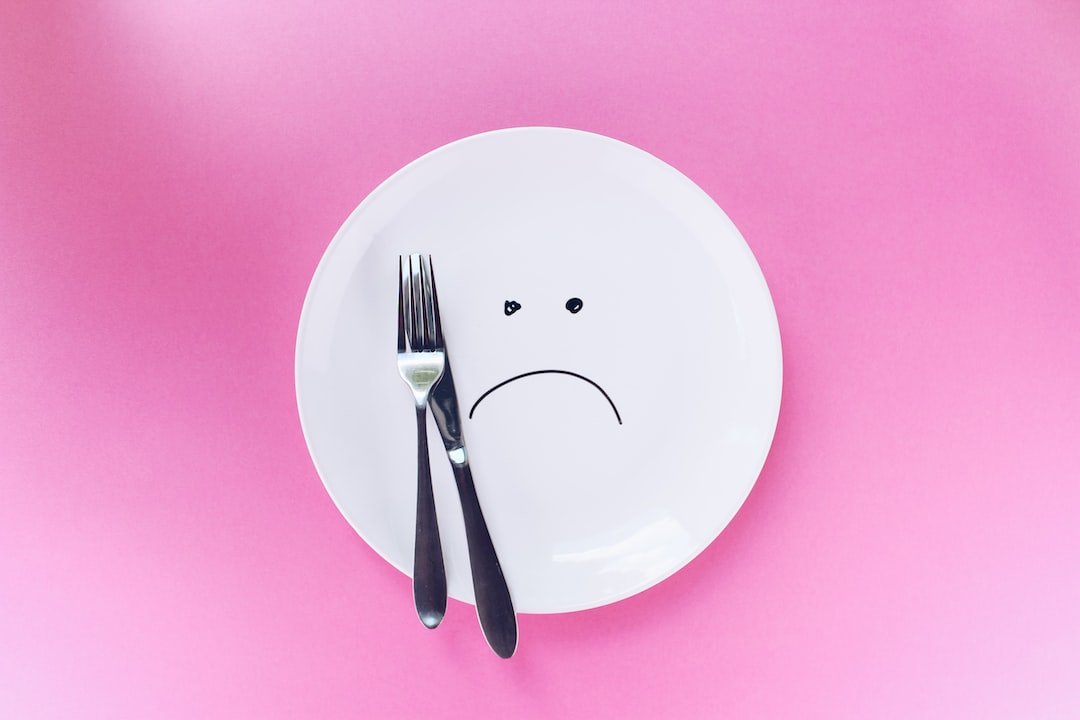Setting a realistic goal for weight loss is crucial for long-term success. Many people have unrealistic expectations when it comes to losing weight, which can lead to frustration and ultimately giving up on their goals. It is important to understand that weight loss is a gradual process and that sustainable results require time and effort.
When setting a weight loss goal, it is important to consider several factors. First, you should take into account your current weight and body composition. It is also important to consider your overall health and any underlying medical conditions that may affect your ability to lose weight. Additionally, you should consider your lifestyle and daily routine, as this will impact the strategies you can implement for weight loss.
Key Takeaways
- Set a realistic weight loss goal to avoid disappointment and frustration.
- Creating a caloric deficit through diet and exercise is key to weight loss.
- A balanced meal plan is essential for sustainable weight loss.
- Incorporating HIIT into your fitness routine can help you burn more calories.
- Tracking your progress and adjusting your plan as needed is crucial for success.
Understanding the Science of Weight Loss
To effectively lose weight, it is important to understand the science behind it. The body stores excess calories as fat, which serves as a source of energy when needed. When you consume fewer calories than your body needs, it will start using stored fat for energy, resulting in weight loss.
Metabolism plays a crucial role in weight loss. It refers to the chemical processes that occur within the body to convert food into energy. Some people have a faster metabolism, which means they burn calories more quickly, while others have a slower metabolism. However, there are ways to boost your metabolism through exercise and certain dietary choices.
Creating a caloric deficit is essential for weight loss. This means consuming fewer calories than your body needs to maintain its current weight. By creating a caloric deficit, your body will start using stored fat for energy, resulting in weight loss over time.
Creating a Caloric Deficit through Diet and Exercise
To create a caloric deficit, you need to calculate your daily caloric needs. This can be done by determining your basal metabolic rate (BMR), which is the number of calories your body needs to function at rest. Once you have your BMR, you can factor in your activity level to determine your total daily energy expenditure (TDEE).
Reducing calorie intake is an effective way to create a caloric deficit. This can be done by making healthier food choices and controlling portion sizes. It is important to focus on nutrient-dense foods that provide essential vitamins and minerals while being lower in calories. Incorporating more fruits, vegetables, lean proteins, and whole grains into your diet can help you feel satisfied while consuming fewer calories.
Exercise is also crucial for weight loss. It not only burns calories but also helps to increase muscle mass, which can boost metabolism. Incorporating both cardiovascular exercise and strength training into your routine can help you achieve optimal results. Aim for at least 150 minutes of moderate-intensity aerobic activity or 75 minutes of vigorous-intensity aerobic activity per week, along with two or more days of strength training.
Designing a Balanced Meal Plan for Sustainable Weight Loss
| Meal Plan Component | Recommended Amount | Importance |
|---|---|---|
| Protein | 3-4 ounces per meal | Helps build and repair muscle tissue, keeps you feeling full |
| Vegetables | 2-3 cups per meal | Provides essential vitamins and minerals, high in fiber to keep you full |
| Whole Grains | 1/2 - 1 cup per meal | Provides sustained energy, high in fiber to keep you full |
| Healthy Fats | 1-2 tablespoons per meal | Helps absorb vitamins and minerals, keeps you feeling full |
| Fruits | 1-2 servings per day | Provides essential vitamins and minerals, high in fiber to keep you full |
| Water | 8-10 cups per day | Keeps you hydrated, helps flush out toxins |
A balanced diet is essential for sustainable weight loss. It is important to include a variety of foods from all food groups to ensure you are getting all the necessary nutrients. A balanced meal plan should include carbohydrates, proteins, healthy fats, and plenty of fruits and vegetables.
When planning meals, it is helpful to prepare in advance. This can involve meal prepping for the week or simply having a rough idea of what meals you will be having each day. By planning ahead, you can ensure that you have healthy options available and avoid making impulsive food choices.
When it comes to food choices for weight loss, it is important to focus on nutrient-dense options. This means choosing foods that are high in nutrients but relatively low in calories. Some examples include lean proteins like chicken breast or tofu, whole grains like quinoa or brown rice, and plenty of fruits and vegetables.
Incorporating High-Intensity Interval Training (HIIT) into Your Fitness Routine
High-Intensity Interval Training (HIIT) is a popular form of exercise that involves short bursts of intense activity followed by periods of rest or lower-intensity exercise. HIIT has been shown to be highly effective for weight loss due to its ability to burn a significant amount of calories in a short period of time.
The benefits of HIIT for weight loss are numerous. It not only burns calories during the workout but also increases metabolism, resulting in continued calorie burn even after the workout is over. HIIT also helps to build lean muscle mass, which can further boost metabolism and aid in weight loss.
Incorporating HIIT into your fitness routine can be done in various ways. You can choose to do a HIIT workout on its own, or you can incorporate HIIT exercises into your existing routine. For example, you can add intervals of high-intensity exercises like sprints or burpees into your regular cardio workout.
Tracking Your Progress and Adjusting Your Plan as Needed

Tracking your progress is essential for staying motivated and making adjustments to your plan as needed. There are several ways to measure progress, including weighing yourself regularly, taking body measurements, and tracking changes in how your clothes fit.
When tracking progress, it is important to focus on more than just the number on the scale. Weight loss is not always linear, and there may be fluctuations due to factors like water retention or muscle gain. Instead, focus on overall trends and how you feel physically and mentally.
If you find that you are not making progress or are plateauing, it may be necessary to adjust your plan. This can involve increasing the intensity or duration of your workouts, reassessing your caloric intake, or seeking guidance from a professional coach or nutritionist.
Avoiding Common Pitfalls and Sticking to Your Goals
There are common obstacles that can hinder weight loss progress. These include emotional eating, lack of motivation, and unhealthy habits. It is important to identify these obstacles and develop strategies for overcoming them.
One common obstacle is emotional eating, which involves using food as a way to cope with emotions. To overcome emotional eating, it is important to find alternative ways to deal with emotions, such as practicing mindfulness or engaging in a hobby.
Lack of motivation can also be a challenge when it comes to sticking to your weight loss goals. To stay motivated, it can be helpful to set smaller, achievable goals along the way and reward yourself when you reach them. Additionally, finding a workout buddy or joining a support group can provide accountability and motivation.
Finding Support and Accountability through Friends, Family, or a Professional Coach
Having support and accountability is crucial for long-term weight loss success. Friends and family can provide encouragement and help keep you on track. Additionally, joining a support group or finding an accountability partner can provide additional motivation.
In some cases, it may be beneficial to seek the guidance of a professional coach or nutritionist. They can provide personalized advice and help you develop a plan that is tailored to your specific needs and goals. A professional coach can also provide ongoing support and accountability throughout your weight loss journey.
Making Lifestyle Changes for Long-Term Weight Management
Weight loss is not just about reaching a specific number on the scale; it is about making sustainable lifestyle changes. This involves adopting healthy habits that can be maintained long-term. It is important to focus on creating a healthy relationship with food and exercise rather than relying on quick fixes or fad diets.
To make sustainable lifestyle changes, it is important to start small and gradually incorporate healthier habits into your daily routine. This can involve making small changes like swapping sugary drinks for water or taking the stairs instead of the elevator. Over time, these small changes will add up and become second nature.
Maintaining healthy habits for long-term weight management requires consistency and perseverance. It is important to stay committed to your goals and not get discouraged by setbacks. Remember that weight loss is a journey, and there will be ups and downs along the way.
Celebrating Your Success and Maintaining Your Healthy Habits
Celebrating your success is an important part of the weight loss journey. It is important to acknowledge and reward yourself for reaching milestones and achieving your goals. This can involve treating yourself to a non-food reward, such as a spa day or a new outfit.
Maintaining your healthy habits is crucial for preventing weight regain. It is important to continue practicing the habits that helped you lose weight, such as regular exercise and making healthy food choices. Additionally, it can be helpful to periodically reassess your goals and make adjustments as needed to ensure continued success.
In conclusion, setting a realistic goal for weight loss is essential for long-term success. Understanding the science of weight loss, creating a caloric deficit through diet and exercise, designing a balanced meal plan, incorporating HIIT into your fitness routine, tracking progress, avoiding common pitfalls, finding support and accountability, making lifestyle changes, and celebrating success are all important components of a successful weight loss journey. By following these strategies and staying committed to your goals, you can achieve sustainable weight loss and maintain a healthy lifestyle.
If you're looking to lose weight and want to try something new and exciting, why not consider martial arts? In a recent article titled "From Karate to Kung Fu: Explore the Exciting World of Martial Arts Near You," you can discover the diverse range of martial arts styles available and find a class that suits your interests and goals. Whether you're a beginner or have previous experience, martial arts can be a fun and effective way to shed those extra pounds. So why not give it a try? Read more
FAQs
What is the recommended amount of weight loss per week?
The recommended amount of weight loss per week is 1-2 pounds. Losing more than 2 pounds per week can be unhealthy and unsustainable.
What is the best way to lose weight?
The best way to lose weight is through a combination of a healthy diet and regular exercise. It is important to create a calorie deficit by consuming fewer calories than you burn.
Is it possible to lose 20 pounds in a month?
While it is possible to lose 20 pounds in a month, it is not recommended as it can be unhealthy and unsustainable. Rapid weight loss can also lead to muscle loss and a slower metabolism.
What are some healthy foods to eat while trying to lose weight?
Healthy foods to eat while trying to lose weight include fruits, vegetables, lean proteins, whole grains, and low-fat dairy products. It is important to limit processed and high-calorie foods.
How much exercise should I do to lose weight?
It is recommended to do at least 150 minutes of moderate-intensity exercise or 75 minutes of vigorous-intensity exercise per week to lose weight. It is also important to incorporate strength training exercises to build muscle and boost metabolism.
What are some tips for staying motivated while trying to lose weight?
Some tips for staying motivated while trying to lose weight include setting realistic goals, tracking progress, finding a workout buddy, and rewarding yourself for reaching milestones. It is also important to focus on the health benefits of weight loss rather than just the number on the scale.














